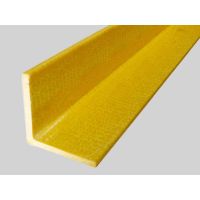FRP Twisted Septic Tank is a significant advancement in wastewater treatment technology, standing out with its innovative design and materials. Ideal for areas without centralized sewage facilities, this tank is perfect for both residential and commercial use. Its unique design and advanced construction ensure practicality and efficiency. The tank’s durability and adaptability to different environmental conditions make it a top choice for modern wastewater management solutions.


Overview
- Structural Excellence:
The tank’s unique twisted design is its standout feature, transcending mere aesthetics to provide functional benefits. This structure enhances the tank’s resistance to external forces, ensuring stability and longevity even under challenging conditions. Its interior compartmentalization facilitates efficient sewage treatment through various stages, including settling and digestion, mirroring a comprehensive treatment system. - Advanced Materials:
Constructed from high-strength fiberglass composite material and reinforced with unsaturated polyester resin, the tank showcases cutting-edge fiberglass winding technology. Its cylindrical shape with a concave-convex wheel-shaped head structure, optimized through ANSYS structural calculation software, speaks volumes of its technological sophistication. The design choices result in a tank that is lightweight yet remarkably strong. - Durability and Efficiency:
The tank’s durability is a significant advantage, offering high strength, excellent corrosion resistance, and a notable absence of leakage or pollution concerns. Its lightweight nature, compared to traditional concrete septic tanks, adds to its appeal, making installation and transportation more manageable. The material’s corrosion resistance ensures suitability for diverse environmental conditions, enhancing its versatility. - Practical Design:
With inlet and outlet pipes at both ends and inspection wellheads installed on the body, the tank is designed for ease of use and maintenance. The internal partition plates create compartments, and a circulating flashing device extends sewage retention time, improving treatment effectiveness.
Features
- Cost-Effectiveness and Efficiency: These tanks are produced using industrialized, mechanized, and batch methods, resulting in a small volume with a large effective capacity, which saves on both manufacturing and installation costs. They are also designed for labor and time efficiency, being lightweight, high-strength, and easy to install.
- Space Saving: The design minimizes the need for extensive land excavation, saving valuable land space.
- Enhanced Durability: The tank’s twisted design increases strength and resilience, allowing it to better withstand external pressures and environmental stresses compared to standard tanks.
- Improved Structural Integrity: The twisting pattern not only enhances the tank’s aesthetic appeal but also contributes to its overall stability and integrity, reducing the risk of deformation or damage.
- Highly Efficient Wastewater Treatment: The tank efficiently processes and treats wastewater, making it suitable for areas without access to municipal sewage systems. Its anaerobic decay capability is notably more effective than traditional septic tanks.
- Environmentally Friendly: These tanks are environmentally conscientious, with excellent sealing to prevent leakage and pollution. They are also non-corrosive to surrounding flora and infrastructure.
- Longevity: Constructed from fiberglass, these tanks are resistant to aging, acids, and alkalis, and have a lifespan exceeding 50 years.
Superior Pressure and Compressive Strength: Their cylindrical shape and resin sealing greatly enhance compressive strength, offering greater resilience than other shapes. - Low Maintenance: Designed for convenience, these tanks require no post-installation management, have long slag cleaning cycles, and are unpowered, eliminating the need for ongoing maintenance.














